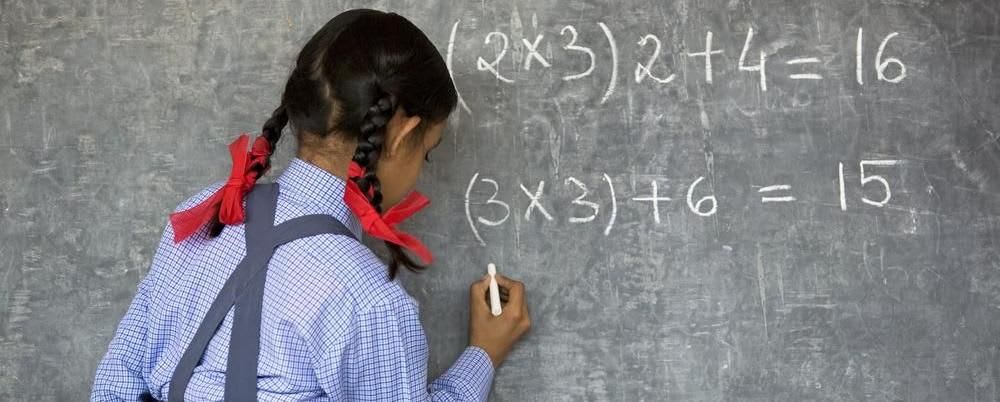Five Global Challenges to Girls’ Education
Girls have historically faced disadvantages when it comes to education access. And while progress has been made, there remains a significant gender gap: 130 million girls between ages six and 17 are out of school, and 15 million primary school-aged girls won’t ever even step foot in a classroom. We can think of no better time to shine a light on this subject than International Women’s Day. Read on for a roundup of four things to know about the global issue of gender and education access.
- Education
- International News

Girls have historically faced disadvantages when it comes to education access. And while progress has been made, there remains a significant gender gap: 130 million girls between ages six and 17 are out of school, and 15 million primary school-aged girls won’t ever even step foot in a classroom.
In establishing girls’ education as one of its strategic development priorities, the World Bank points to the multitude of reasons to correct this imbalance, “Better educated women tend to be healthier, participate more in the formal labor market, earn higher incomes, have fewer children, marry at a later age, and enable better health care and education for their children, should they choose to become mothers. All these factors combined can help lift households, communities, and nations out of poverty.”
We can think of no better time to shine a light on this subject than International Women’s Day. Read on for a roundup of four things to know about the global issue of gender and education access.
1. The most significant gender gaps exist in Africa, the Middle East and South Asia.
Of the 15 million primary school-aged girls without access to education, approximately half of them are in sub-Saharan Africa. But the problem is far from limited to that part of the world.
According to a report from the Brookings Institute, “By geographical region, girls face the largest education gap in the developing countries in the Middle East, South Asia, and Africa. In South Asia as a whole, there is no gender gap at the primary level, reflecting progress in basic education toward gender equality, but in secondary education the average girls’ enrollment is only 44.7 percent, equivalent to 86.5 percent of boys’ net enrollment rate. In the Africa region, the average girls’ enrollment rate is only 74.8 percent at the primary level and only 29.8 percent at the secondary level, far lower rates than in other regions. We note that in the Middle East, it is the Arab countries on average that have lower enrollment rates for both boys and girls. In those countries, the average girls’ net enrollment rates are .95 and .92 of the boys’ rates at the primary and secondary levels, respectively.”
Not only are the poorest countries the ones with the largest gender gaps in enrollments, but low education rates perpetuate the cycle. Citing World Bank statistics indicating that a single year of secondary schooling can increase a woman’s earning by 25 percent later in life thereby increasing GDP along with the fact that children of educated mothers are more likely to be educated themselves, The Guardian concludes, “Getting more girls into school, then, is a linchpin to increase wealth, stability, equality and development.”
2. Gender equality in Central Asia is both dynamic and uneven.
International Women’s Day is such a priority in Kazakhstan and 27 other (mainly former Soviet republics) that it’s been adopted as a public holiday. But how does this translate to the education sphere?
Looking again to Kazakhstan, not only is overall access to primary and secondary schooling “impressively high,” but girls have equal access to education as their male peers, according to The Borgen Project. Across all of Central Asia, however, just half of its countries achieved gender parity in secondary education.
When it comes to tertiary education in Central Asia, female participation varies wildly. In countries like Kazakhstan and Kyrgyzstan, for example, women are more likely than men to go to college, while the same can’t be said in countries like Uzbekistan, Turkmenistan, and Tajikistan. And while female enrollments are trending up in some regions, they’re trending down in others.
3. Europe and North America struggle with STEM studies gap.
While Europe and North American are celebrated for having bridged the gender gap in education and the workforce, experts are now honing in on key “gender differences” pervasive in both settings. In examining why women earn less and are less likely to become entrepreneurs at profitable companies, the Brookings Institute identifies women’s participation in STEM as a major contributing factor.
In the US, for example, not only are there far fewer undergraduate female STEM students, but the proportion of women receiving degrees in these fields fell in the 10-year period between 2004 and 2014. Meanwhile, women represent less than 15 percent of all STEM graduates in the vast majority of European countries.
Aside from the matter of fairness, the economic implications are profound. “If women and men are equally able, then the fact that women are not entering these fields of study or working in these sectors and occupations means that talent is being misused and that economies are less productive than they could be. While the literature on this is still emerging, some recent work suggests that correcting gender segregation in employment and in entrepreneurship could increase aggregate productivity globally by as much as 16 percent,” says Brookings.
4. In Latin America, there’s parity...with a catch.
At first glance, gender parity in Latin American schools seems promising. “[Girls] have gained what is termed ‘gender parity’ --girls are as likely as boys to enter first grade, are as likely (or unlikely) to finish primary school, and in some countries are even more likely to attend college,” writes Caroline E. Parker in ReVista: Harvard Review of Latin America.
So what’s the problem? They still find their options limited when it comes to planning for the future. Continues Parker, “While schools in Central America offer access to girls, they also perpetuate the social system that limits their opportunities. Central American schools -- as well as many others in Latin America -- face the challenge of addressing society-wide gender issues in the school setting.”
In other words, “parity” doesn’t necessarily translate to “access” in education, and “access” doesn’t necessarily translate to “opportunities.” Concludes Parker, “But access is only the first step in examining equality of education. After access, students must be guaranteed equality of survival rates-"staying power"-and then equal quality of education, and finally equality of post-school outcomes.”
5. Boys can be important advocates -- if they're educated, too.
One last thing to keep in mind? While girls’ education may be the focal point, the value of boys’ education should not be overlooked -- not the least because, according to a report from UKAID as reported by the Central Asia Institute, “Education provides an important opportunity to engage boys within learning environments to challenge gender inequality and encourage them to view girls as equal partners in education and life.”

Joanna Hughes
Author
Joanna worked in higher education administration for many years at a leading research institution before becoming a full-time freelance writer. She lives in the beautiful White Mountains region of New Hampshire with her family.
Find a program in these categories
Read related articles

Are International Students Immigrants? The Debate Explained

Six Things All International Students Should Do Before Traveling
